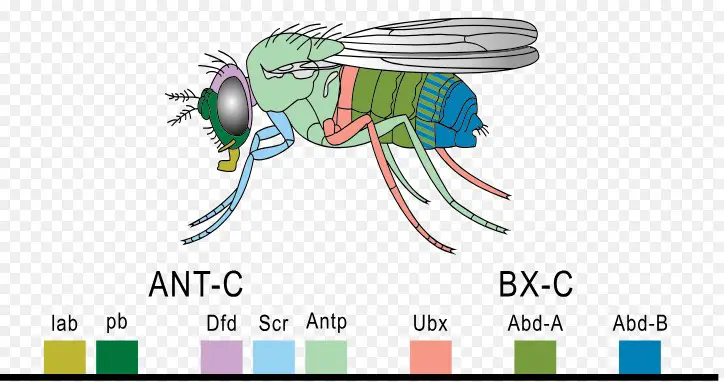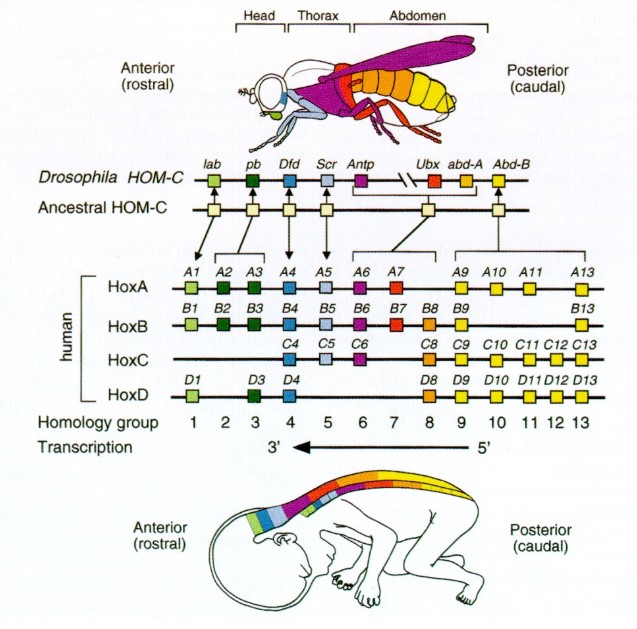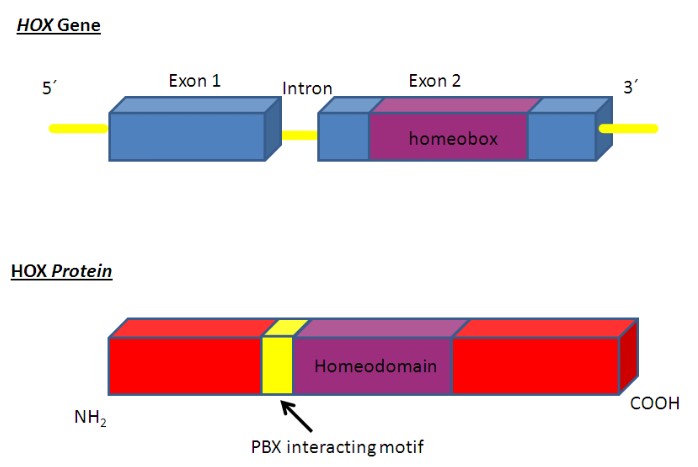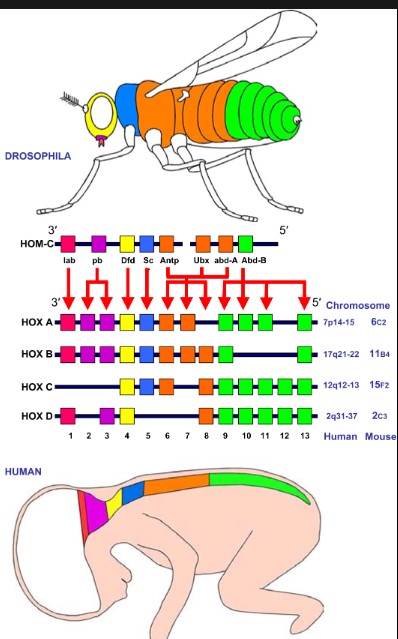In the vast and intricate world of genetics, two terms often surface to describe elements fundamental to our understanding of biological development: Homeobox and Hox genes. These genetic sequences play pivotal roles in the orchestration of developmental processes, guiding the formation of complex organisms from simple embryonic states. Their discovery has illuminated pathways that underpin not only human development but the biological diversity seen across the animal kingdom.
Homeobox genes are a family of regulatory genes that encode for transcription factors, which are proteins that bind to DNA and influence the expression of other genes. Hox genes, a subset of the Homeobox family, specifically control the body plan of an embryo along the head-tail axis, determining the type and placement of body segments. In essence, while all Hox genes are Homeobox genes, not all Homeobox genes are Hox genes, highlighting a crucial distinction in their roles and specificity.
These genes are not just biological curiosities; they are central to our understanding of evolutionary biology, developmental biology, and genetic disorders. By exploring the nuances of Homeobox and Hox genes, scientists can trace the evolutionary paths of organisms, understand congenital anomalies, and even explore potential therapeutic avenues for genetic diseases. Their study represents a confluence of genetics, evolution, and medicine, offering insights into the mechanisms that drive the complexity of life.

Homeobox Genes
Overview
Homeobox genes are fundamental genetic elements that play a crucial role in the development and differentiation of cells in organisms. These genes contain a specific DNA sequence known as a homeobox, which encodes for transcription factors. Transcription factors are proteins that bind to DNA and regulate the activity of other genes. This regulation is essential for ensuring that cells develop into the correct type at the right place and time in an organism.
Definition and Function
The definition of Homeobox genes revolves around their ability to control gene expression. Their function is vital in the developmental processes, guiding the formation of body structures from the embryonic stage to the fully developed organism. By influencing the expression of target genes, Homeobox genes dictate the spatial arrangement of body parts, playing a pivotal role in morphogenesis and organogenesis.
Role in Development
Homeobox genes are instrumental in the development of an organism. They:
- Define the body axis.
- Establish the boundaries of body segments.
- Control the development of limbs and organs.
This regulatory role ensures that each part of the organism develops in its proper place, contributing to the overall body plan.
Characteristics
Structure of Homeobox Genes
The structure of Homeobox genes is defined by the presence of the homeobox, a 180-base pair sequence. This sequence translates into a 60-amino acid helix-turn-helix motif in the protein product, which binds to DNA. The conservation of this structure across different species underlines its evolutionary significance and fundamental role in development.
Evolutionary Significance
Homeobox genes exhibit a remarkable evolutionary significance. They are found in nearly all eukaryotes, highlighting their importance in the evolution of complex life forms. The conservation of Homeobox genes across diverse species suggests they play a critical role in the basic mechanisms of developmental biology.
Functions
In Embryonic Development
In embryonic development, Homeobox genes dictate the body plan layout, ensuring that cells differentiate into appropriate tissue types. They are crucial for:
- The formation of the anterior-posterior axis.
- Segmental organization of the embryo.
- Development of the nervous system and sensory organs.
Beyond Embryogenesis
Beyond embryogenesis, Homeobox genes continue to influence organismal development and function. They are involved in:
- Regeneration and healing processes.
- Maintenance of stem cell populations.
- Regulation of adult organ function.
Hox Genes
Overview
Hox genes, a subset of the Homeobox gene family, have a more specialized role in development. They are specifically involved in determining the body plan’s architecture along the anterior-posterior axis. This means they control the type and placement of body segments in a developing embryo.
Definition and Specific Roles
Hox genes are defined by their role in specifying the identity of body segments. Unlike broader Homeobox genes, Hox genes have specific sequences that are responsible for the distinct characteristics of different body regions. Their specific roles include:
- Determining the head, thorax, and abdomen regions in insects.
- Defining the vertebral column’s segmentation in vertebrates.
Distinction from Homeobox Genes
The main distinction between Hox genes and other Homeobox genes lies in their specificity and function. While all Hox genes are Homeobox genes, not all Homeobox genes have the same specific roles in segment identity and arrangement.
Characteristics
Structural Specifics of Hox Genes
Hox genes are characterized by a conserved sequence within the homeobox, which allows for the precise control over the development of body segments. This conservation is a hallmark of their evolutionary adaptation to segment specification.
Evolutionary Perspective
From an evolutionary perspective, Hox genes have been crucial in the diversification of body plans across different species. The variations and expansions of Hox gene clusters correlate with the complexity of organismal structures, indicating their role in evolutionary development.
Functions
Role in Body Plan Specification
The primary function of Hox genes is to specify the body plan. This involves:
- Assigning specific identities to segments along the body axis.
- Ensuring the correct development of limbs and organs in these segments.
Impact on Morphological Diversity
Hox genes have a significant impact on morphological diversity. By controlling the expression pattern of genes in different body segments, they allow for the evolution of diverse body structures, catering to the ecological and functional needs of various species.

Comparison
Structural Differences
Gene Structure Comparison
Homeobox and Hox genes share a fundamental structure characterized by the homeobox sequence, yet they exhibit notable structural differences. Homeobox genes contain a 180-base pair sequence that translates into a 60-amino acid homeodomain. This homeodomain is responsible for DNA binding and gene regulation. On the other hand, Hox genes, while also containing the homeobox, are organized into clusters that have evolved to specify the segmental identity along the anterior-posterior axis of an organism. The arrangement of Hox genes in clusters is a key structural feature that differentiates them from other Homeobox genes.
Sequence Similarities and Divergences
While there are similarities in the homeobox sequence across the gene family, divergences in the sequence outside the homeobox region contribute to their functional specificity. Hox genes, for example, have evolved specific sequences that enable them to regulate distinct developmental processes. These divergences are crucial for the specialization of functions, leading to the diverse morphological features observed in different organisms.
Functional Differences
Developmental Roles
The developmental roles of Homeobox and Hox genes highlight their functional differences. Homeobox genes have a broad role in the regulation of gene expression critical for development and cell differentiation. Hox genes, specifically, dictate the layout of the body plan, ensuring the correct development of body segments. This specialization allows Hox genes to play a critical role in defining the specific characteristics of different body regions.
Regulatory Mechanisms
The regulatory mechanisms employed by Homeobox and Hox genes also differ. Homeobox genes typically function by binding to DNA and influencing the expression of genes involved in development. Hox genes, in their regulatory role, follow a colinear expression pattern that matches their physical arrangement in the genome with the body segments they influence. This unique regulatory mechanism ensures the precise development of body structures.
Evolutionary Differences
Phylogenetic Distribution
The phylogenetic distribution of Homeobox and Hox genes underscores their evolutionary differences. Homeobox genes are found across a wide range of organisms, from plants to animals, indicating their fundamental role in the development. Hox genes, however, are primarily associated with the development of body plans in animals, reflecting their specific role in morphological diversification.
Evolutionary Origins and Divergences
The evolutionary origins of Homeobox and Hox genes trace back to the earliest multicellular organisms. However, the diversification and specialization of Hox genes are thought to have played a crucial role in the evolution of complex body plans seen in animals. These divergences have allowed for the adaptation and evolution of species to fill various ecological niches, showcasing the adaptive nature of genetic evolution.
Significance in Research
Medical Implications
Mutations and Genetic Disorders
The study of Homeobox and Hox genes has significant medical implications. Mutations in these genes can lead to a variety of genetic disorders affecting development and morphology. For example, mutations in certain Hox genes have been linked to limb malformation and spinal cord defects. Understanding these genetic underpinnings offers potential pathways for diagnosing and treating such conditions.
Potential Therapeutic Targets
The regulatory roles of Homeobox and Hox genes in development and cell differentiation make them potential therapeutic targets for regenerative medicine and cancer treatment. By manipulating these genes, scientists hope to direct the differentiation of stem cells or reprogram cancer cells to a less aggressive state.

Evolutionary Biology
Insights into Phylogenetic Development
Homeobox and Hox genes provide insights into phylogenetic development, helping scientists understand the genetic basis of evolutionary changes in morphology. The study of these genes has illuminated the mechanisms through which complex body plans and specialized organs have evolved.
Understanding Morphological Evolution
The morphological evolution of species is closely tied to changes in Homeobox and Hox gene expression patterns. These genes have been instrumental in the diversification of life forms, offering a genetic window into the processes that drive evolutionary development.
Challenges and Future Directions
Research Gaps
Despite significant advances, research gaps remain in our understanding of Homeobox and Hox genes. Questions about the exact mechanisms through which these genes regulate development, their interaction with other genetic elements, and their role in non-traditional model organisms remain to be fully explored.
Current Challenges in Study
Current challenges in studying these genes include the complexity of genetic regulation, redundancy in genetic functions, and the difficulty of manipulating genetic sequences without unintended consequences. These challenges necessitate the development of innovative research methods and tools.
Future Research Directions
Future research directions aim to address these challenges by:
- Developing more precise genetic editing technologies.
- Exploring the role of Homeobox and Hox genes in non-model organisms.
Frequently Asked Questions
What are Homeobox genes?
Homeobox genes are a large family of genes that play a critical role in early developmental processes across different organisms. They encode transcription factors that bind to specific DNA sequences, thereby controlling the expression of other genes that dictate the body’s structure and organ placement. This gene family is essential for the correct development of the body plan and the regulation of cell differentiation and morphogenesis.
How do Hox genes differ from Homeobox genes?
Hox genes are a specific subgroup within the larger Homeobox gene family, with a primary focus on controlling the body plan’s layout along the anterior-posterior axis. This means Hox genes determine the type and position of body segments in developing embryos. While all Hox genes contain the Homeobox DNA sequence, they are distinguished by their unique role in specifying segment identity, which is not a characteristic of all Homeobox genes.
Why are Hox genes important in evolutionary biology?
Hox genes are pivotal in evolutionary biology because they play a fundamental role in the diversification of body plans among different species. Variations and mutations in these genes can lead to significant changes in body structure, contributing to the evolutionary adaptation and speciation. By studying Hox genes, scientists can gain insights into the evolutionary history of organisms and understand the genetic mechanisms underlying the vast diversity of life forms on Earth.
Can mutations in Homeobox or Hox genes cause diseases?
Yes, mutations in Homeobox or Hox genes can lead to developmental disorders and diseases. Because these genes are crucial for the proper development of the body plan and organ systems, mutations can result in congenital anomalies, including limb malformations and organ placement disorders. Research into these genes helps in diagnosing and understanding the genetic basis of many developmental disorders, opening pathways for potential therapies and interventions.
Conclusion
The exploration of Homeobox and Hox genes unveils a fascinating narrative of biological development and evolutionary diversity. These genetic sequences serve as the architects of organismal form, directing the development of complex life from its most embryonic stages. Their study not only enhances our understanding of developmental biology but also bridges gaps in our knowledge of evolutionary processes and genetic diseases.
As we advance our research into these pivotal genes, their significance continues to grow, highlighting their potential in addressing some of the most challenging questions in biology and medicine. The journey through the microscopic world of Homeobox and Hox genes is far from over; it promises to unlock further secrets of life, offering hope for new therapeutic strategies and deepening our appreciation for the intricacy of life’s blueprint.

